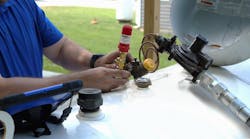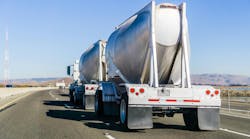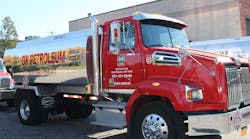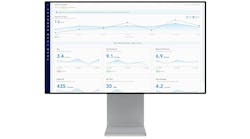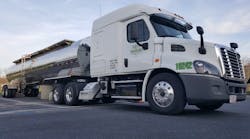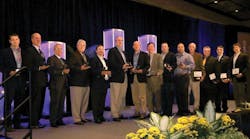MORE than ever, major oil companies and customers are looking to industry standards to refer to when it comes to how their products are handled in terminals, according to David Ware, a business partner in WDD Inc/Aviation Training Academy, a company that provides all aspects of training and inspections on fixed base operators, corporate flight departments, helicopter operators, and road transport carriers and terminal operations.
“They want assurance that the terminal operator has documented programs, procedures, and training in place, ensuring that the quality of their product is maintained,” he said. “More and more, they’re looking for some backbone to say, ‘Hey, you need to meet this standard. I don’t have to recreate a whole new standard for you to understand how important it is for you to manage my product. I’m paying you money. Sort of like a bank. I’m putting this fuel into your storage and facility. Show me how you’re going to guarantee I’m going to get all of that out of there.’
“They want to ensure you have terminal operators with documented procedures. If you don’t have it documented, there’s no defense against that. Remember a Recommended Practice quickly becomes an ‘industry standard’ when something goes wrong. That’s when it becomes real. Most of the guidelines at OSHA have been written in blood. Somebody had to get hurt in order for a new policy or standard or procedure or documented training program to come into place. Don’t wait for something to go wrong to be ‘in line’ with the terminaling industry standards.”
Ware discussed two key industry standards that are part of the quality equation during the International Liquid Terminals Association’s International Operating Conference held June 1-2 in Houston, Texas.
He analyzed and examined API RP 1640 (Product Quality in Light Product Storage and Handling Operations) and API RP 1595 (Design, Construction, Operation, Maintenance, and Inspection of Aviation Pre-Airfield Storage Terminals).
He said API RP 1640 is intended to provide guidance on the minimum equipment standards and operating procedures for the receipt, storage blending, and delivery of non-aviation light products, their blend components, and additives at distribution and intermediate storage terminals, including related operations of pipeline, marine vessel (barge or ship) and road and rail transport.
He said there are some similarities between RP 1640 and RP 1595:
RP 1640’s Section 5.2.2 (Tank Lining) says that all new vertical tanks or existing tanks having new bottoms installed should have at least the floor and first (bottom) three feet of the walls internally coated per API 652; these should be white or light colored to aid inspection; and all new horizontal and small vertical (less than or equal to 30,000 US gallons) should be coated internally throughout.
RP 1595’s Section 6.2.4 (Tank Lining) says that there’s an additional requirement to meet the performance requirements of API 1541 that has been added for new vertical tanks, existing aviation grade vertical tanks having new bottoms installed, or existing tanks being converted to aviation service: tanks shall have at least the floor and first (bottom) three feet of walls internally coated.
RP 1640’s Section 7.3.3 (Filter and Water Separator Elements) says that polytetrafluoroethylene (PTFE) coated screens or synthetic separator elements may continue in service indefinitely, provided that they satisfy the manufacturer’s test requirements on ability to repel water.
RP 1595’s Section 16.4.3 (Filter/Water Separator Elements) says that PTFE coated or synthetic separator elements may continue in service indefinitely provided that they satisfy the manufacturer’s test requirements on water repellency.
“You take the filter out of the vessel, put it into product, rub it off with a clean brush, run water over it, and make sure it repels water like the wax job on a car,” he said. “If it doesn’t pass, you have to clean it and test it again. You have two chances.
“RP 1595 talks a lot more about documentation and the frequency of tests. If you didn’t write it down that he showed you how to do it, it didn’t happen. They want to make sure you have quality assurance from the organizational side of things. On top of it, you have to have a site quality manager. That’s the guy at the facility who’s making stuff at the quality assurance side happen. Then you have the actual quality-control inspector—the person who goes out and does the stuff.”
Differences between the two RPs:
RP 1640’s Section 15.3 (Additive Transloading) says that operating procedures applying to loading truck transports from a tank car are for “Additive Transloading” only.
RP 1595’s Section 10.3.5 (Transloading of Aviation Product Rail Cars) says that for railcars used as temporary storage, loaded railcars are off-loaded into road transports for shipment to airport storage; for an empty rail car placed at a rail siding, road transports deliver aviation fuel to the railcar, and the railcar then transports the aviation fuel to another site.
“RP 1640 talks little about filtration, partly because there’s not a lot of filtration that takes place on the gas/diesel side of things,” he said. “You might see a strainer every now and then with product coming in from a pipeline or maybe at the load rack, but not a lot of talking about sampling or product out of a filter.”
Ware said the Management of Change (MOC) process is noted throughout each document.
“A documented MOC program is critical in identifying the risks involved in every aspect of the terminaling of light products and aviation fuels,” he said. “The day in and day out—sometimes it’s really hard. We do a lot of training with terminals and containers.
“These guys are 20, 30, 40 years at the same terminal, pretty much doing the same thing and coming in the same door for all that time. MOC is a phenomenal way to document things. Because at some point in time, those guys who have been there for 20, 30, 40 years are going into retirement. You have to make sure you have people in place and have those people trained.”
Risk management is all about identifying and managing the risks associated with operations and ensure the health, safety, and well-being of everyone who works for the operation, or who may be affected by that operation.
The first objective is to know how operations are to be safely performed, and the second is to know why.
“Back in the day—20 or 30 years ago—it was sort of like, ‘There’s the tank, get busy,’ ” he said. “There might have been an extra step in there, but there might have been a guy or gal hurt badly because we skipped that one step. That’s why there’s OSHA and guidelines on how to do something.”
He said the two major contributors to eliminating accidents at a facility are proper equipment (calibrated) and proper training (documented).
“When I’m talking about proper training, I’m talking about documented training,” he said, “because if you didn’t write it down, it didn’t happen.” ♦




